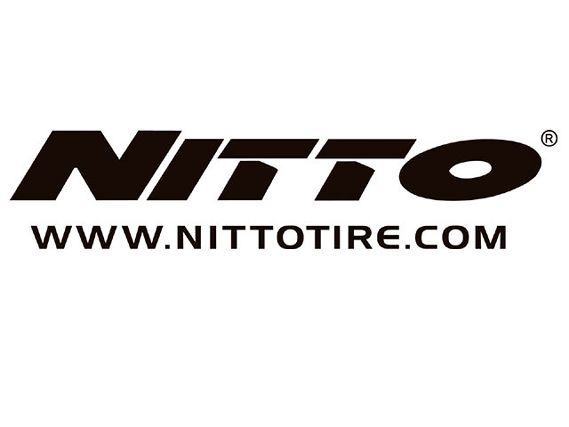 | Nitto Tires - Live Low And Prosper
| Nitto Tires - Live Low And Prosper
From springs and shocks to race tires and plus-size rubber, the tire and suspension market is stuffed full of things to buy and tinker with. Spanning the full spectrum, from rusty knock-off to race ready, there are numerous suspension parts available that appeal towards every build, and every wallet. Some people want the most compliant, responsive suspension available regardless of the price, while others simply want their cars to sit lower for better looks. There is no problem in following either path, as long as you know up front what it is you're going to end up with. You can't just cut six or seven coils off of your stock springs, dump your ride, and then expect instant Formula One handling. Things are never that easy, and there are other factors to worry about first.
Besides the choppy ride quality, increased wear on the stock dampers, and reduced ground clearance, there are alignment issues to worry about. Yes, your car is now slammed and looks great, but you'll find that your tires' inner edges are wearing faster than ever before. Tires are never cheap, and you'd be plenty pissed if you found out you had to replace all four after only a few months. The reason for this dark side of lowering cars is the geometry design of most any independent suspension setup. Now, unless your car was aligned by Cletus and Jed down at the local Billy Lube, it was most likely set up with some amount of negative camber for grip and even wear through turns. If you can imagine a tire sitting straight up on the ground, camber is the amount of which the top of the tire tilts in (negative) or out (positive) of the fender well. As you lower your car more, your tires will gain more negative camber. Extreme ride height drops of 3 inches give a car up to four times as much negative camber as stock. The problem with excessive negative camber is that with the tire tilted inwards so much, your car will just be rolling on the inner lower edge of your tires, a thin strip only a few inches wide. Without even wear, this sliver of tire tread will be abused and destroyed, displaying steel belts and cords in only a few months. Needless to say, when you see steel belts, you're going to need a new set of tires, and that means more bills.
There are numerous alignment kits on the market from such manufacturers as SPC Performance, Ingalls, and Hotchkis, but if you're running some serious camber, there's probably a reason you didn't pick up a kit in the first place. Maybe your alignment is so out of whack you couldn't get the camber adjusted correctly at all, or maybe you just don't have the cash for it right away after buying a set of lowering springs and bigger wheels. But bigger wheels need bigger tires, and Nitto just might have the solution you're looking for. Nitto has created the NeoGen tire, which is specifically designed to last longer and give you more bang for the buck.
The NeoGen tire is one of the latest creations from Nitto Tires, and was specifically designed for the sport compact market. The NeoGen tire is a siped all-season tire with a mud and snow (M&S) rating for go anywhere traction, while the compound itself is silica reinforced with an asymmetrical non-directional design for improved performance under any conditions. The tire itself is V and Z speed rated, but doesn't have the outright grip of an all-out dry weather tire such as the BF-Goodrich KD or the Yokohama A048. The beauty of the NeoGen lies in its carefully created tread pattern. The "3D multiwave siping" creates a blade-like image that runs the entire circumference of the tire. It is this slanted blade texture that allows the NeoGen to ride on a wider section of tread under negative camber situations, which gives the NeoGen tire 20 percent more life than the Nitto NT450 tire on slammed cars.
To put these tires to the test, we had to have some real world experience. We mounted a set of 205/40/17 NeoGen tires and 17-inch Motegi Racing DP6 wheels on our Project Suzuki Aerio. Following a past SEMA appearance, where the Suzuki received a rushed set of cut lowering springs, stock shocks, and best guess alignment in order to make the show, our project became the victim of some seriously worn out tires. With steel belts visible on the inner edges of the tires, we decided to test the NeoGen's by not fixing the alignment or suspension, something we don't recommend to all of our readers.
Four months and more than three thousand miles later, we found that our NeoGen's had no discernable wear characteristics. For an even longer, more in-depth test, Nitto Tires provided us with third-party testing results that ran the NeoGen tires versus the Nitto NT450 tires for 24,000 miles. The two sets of tires were run on lowered Honda Civics fit with 205/40/17 tires, regulated tire air pressures, 17x7 wheels, and tire rotation between vehicles every 2,000 miles. At 24,000 miles, the two sets were measured and the NeoGen tires were found to have 20 percent better projected inner shoulder tread life based on the fastest wearing tire, and 23 percent better tread life based on the average of all four tires. Imagine that, getting over 20 percent more tire to drive around on for your hard earned dollar. Not too bad at all.
Projected mileage life after 24,000 miles of testing on lowered Civics Nitto NeoGen Nitto NT450 Tire 1: 31,123 Tire 1: 25,574 Tire 2: 27,677 Tire 2: 22,973 Tire 3: 28,560 Tire 3: 22,978 Tire 4: 30,816 Tire 4: 24,451 Average: 29,544 Average: 23,994